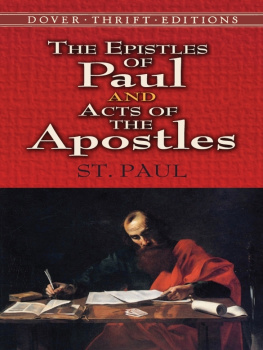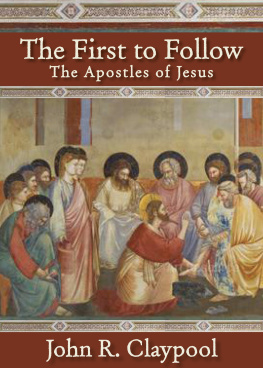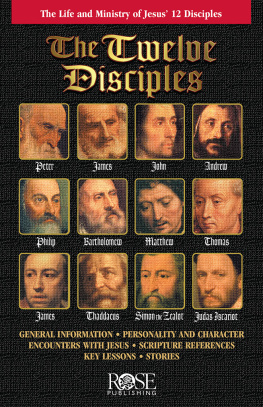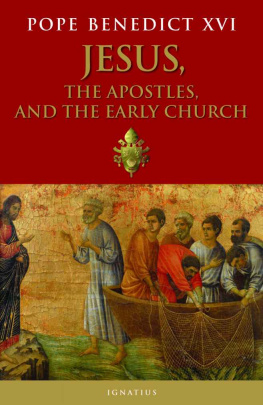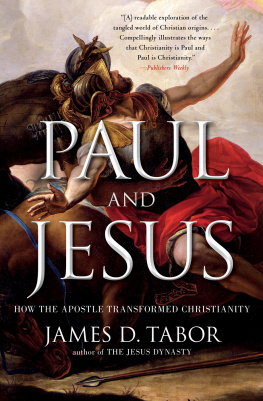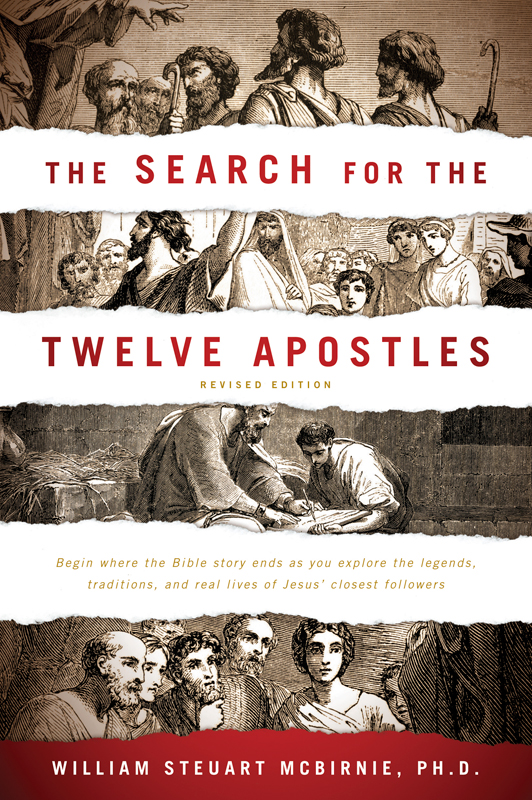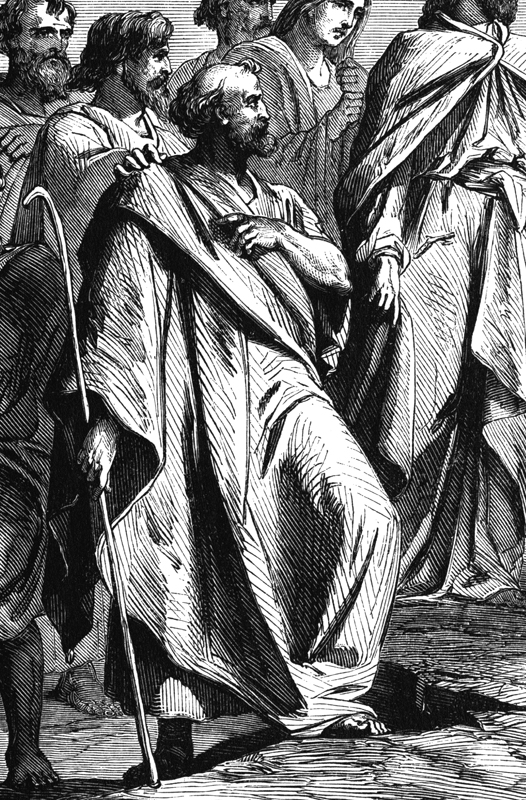What happened to the apostles after Christs resurrection? Most simply vanished from history. Or did they? In this classic work Steuart McBirnie scoured all available sources to trace the lives of these men of faith. Read the biographies of those closest to Christ... and be encouraged in your faith!
DR. CHARLES DYER
Provost and Dean of Education, Moody Bible Institute
The Twelve
Where did they travel? Preach? Suffer martyrdom? What really happened to the twelve apostles of Jesus?
Dr. McBirnie has followed clues almost 2,000 years old to piece together the inspiring story of the disciples. It is not a story of bones and relics but a dramatic tale of men who knew the Savior, heard the God-breathed word, and courageously carried the message to far reaches of the Roman world.
Visit Tyndale online at www.tyndale.com.
Visit Tyndale Momentum online at www.tyndalemomentum.com.
TYNDALE is a registered trademark of Tyndale House Publishers, Inc. Tyndale Momentum and the Tyndale Momentum logo are trademarks of Tyndale House Publishers, Inc. Tyndale Momentum is an imprint of Tyndale House Publishers, Inc.
The Search for the Twelve Apostles
Copyright 1973 by William Steuart McBirnie. All rights reserved.
Notes, Bible Helps, and Map from the Life Application Study Bible copyright 1988, 1989, 1990, 1991, 1992, 1993, 1994, 1997, 2004 by Tyndale House Publishers, Inc. Timeline adapted from iLumina copyright 2004 by Tyndale House Publishers, Inc. All rights reserved.
Cover art from Dover Pictorial Archive Series. All rights reserved.
Designed by Erik M. Peterson
Unless otherwise indicated, all Scripture quotations are taken from the Holy Bible, New Living Translation, copyright 1996, 2004 by Tyndale House Foundation. Used by permission of Tyndale House Publishers, Inc., Carol Stream, Illinois 60188. All rights reserved.
Scripture quotations marked KJV are taken from the Holy Bible, King James Version.
ISBN 978-1-4143-2004-5
ISBN 978-1-4143-8535-8 (ePub); ISBN 978-1-4143-8534-1 (Kindle); ISBN 978-1-4143-8536-5 (Apple)
Build: 2013-03-21 14:16:10
We proclaim to you the one who existed from the beginning, whom we have heard and seen. We saw him with our own eyes and touched him with our own hands. He is the Word of life.
1 JOHN 1:1
The High Adventure of Some Kinds of Research
I n seeking the information contained in this book, my search for the stories of the twelve apostles took me to many famous libraries such as those in Jerusalem, Rome, and the British Museum in London. For years I have borrowed or purchased every book I could find on the subject of the twelve apostles. A five-foot shelf cannot hold them all.
Three times I have journeyed to the island of Patmos and to the locations of the seven churches of the book of Revelation. One whole (and fruitless) day was given to a backroads journey into the high, snowy mountains of Lebanon, up among the famous cedars and elsewhere, to check out a rumor that St. Jude had originally been buried in some small Lebanese village nearby. He was not.
I have personally viewed the many sepulchers which reputedly contain the bones of the Twelve; not that I consider them as having spiritual value, but because I wanted to learn, as an historian, how they came to be where they are, hoping that local tradition could be found in the places where the bones are interred that had escaped the history books. This search took me from Germany, to Italy, to Greece, and to almost every Middle Eastern country.
The Vatican very graciously granted me special permission to photograph in all the churches in Rome and elsewhere in Italy. Some of the bodies or fragments of the bodies of the apostles are preserved in that historic land.
Particularly memorable was the awesome descent far beneath St. Peters Basilica to photograph the bones of the apostle Peter where they rest in an ancient Roman pagan cemetery. One simply cannot imagine, without seeing it, so vast and heavy a church building as St. Peters sitting squarely over a cemetery filled with beautifully preserved family tombs dating back to the first century before Christ!
Seven times I went to Petra in Jordan, and three times to Antioch in Turkey. I also visited Babylon and made four journeys to Iran in search of the history of the apostles missions there.
Of course, there were some disappointments. For example, the body of John is today nowhere to be found. I entered his tomb in Ephesus long ago. Recently after many centuries of neglect, the authorities have sealed it and covered it with a marble floor. Though Johns body has disappeared some parts of the bones of all the other apostles are believed to exist, and I have seen them.
Travelers to the Bible lands so often pass within a few yards of genuine relics of the apostles and never know it. I had made twenty-six journeys to Jerusalem before learning that the head of James the Elder, several arm bones of James the Just, and part of the skull of John the Baptist are held in veneration in two churches there. And, I might add, with some strong historical records as to their authenticity.
This is not, however, a book about bones. It is about living people who were described by Paul as the founders of the churches (See Ephesians 2:19, 20). We are interested in apostolic bones because they are possible clues as to the whereabouts of the ministry and places of martyrdom of the Twelve.
Now let me face head-on a typically Protestant attitude of skepticism concerning apostolic remains in churches and shrines. I used to suppose that these so-called relics were pious frauds, the result of the fervid and superstitious piety of the Middle Ages. Perhaps some are, but after one approaches the whole question with a skeptical mind, and then, somewhat reluctantly, is forced to admit to the strong possibility of their genuineness, it is an unnerving but moving experience.
I suppose the practice of venerating apostolic bones is repugnant to one who, as an evangelical Christian, sees no heavenly merit in praying before the sarcophagi in which they rest. Besides, it does no good to a literal mind to see the gaudy and tasteless trappings which usually festoon the shrines.
But the more one reads of the history of the apostles, and what became of their relics, and the more steeped one becomes in the history and strange (to us) behavior of our Christian ancestors in the Ante-Nicene and Post-Nicene eras, the more the careful preservation of apostolic relics seems to be perfectly in character. To many of those who lived in those times who could not read, an apostolic relic was a visual encouragement to faith!
Let it be clearly understood, this book is an adventure in scholarship, not dogmatism. I am keenly aware that absolute proof of every detail recorded here is not possible. But when a researcher checks many sources against each other, when he himself visits the places mentioned, and when he finds many new documents that are not in books, or not commonly found, then he develops a feel for the probable or possible.
This book has been an ever growing labor of love. I became more emotionally committed to the task as the years progressed. On several occasions during the laborious research, arduous journeys, and interminable writing and rewriting, I have had occasion to compare notes with scholars who have written about some of the apostles, and have found not only a gracious willingness to discuss my conclusions but to accept some of them instead of those they had hitherto held.


